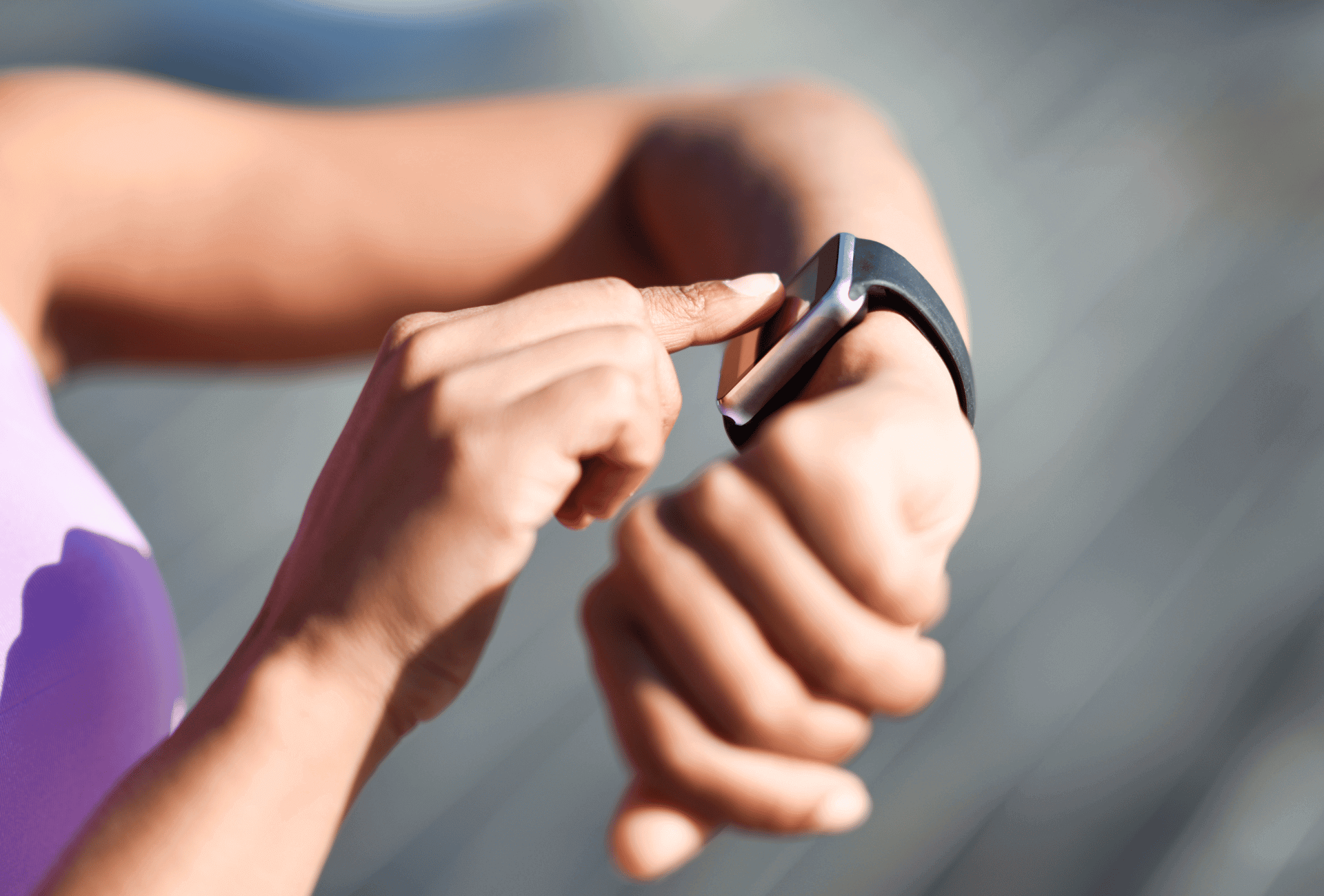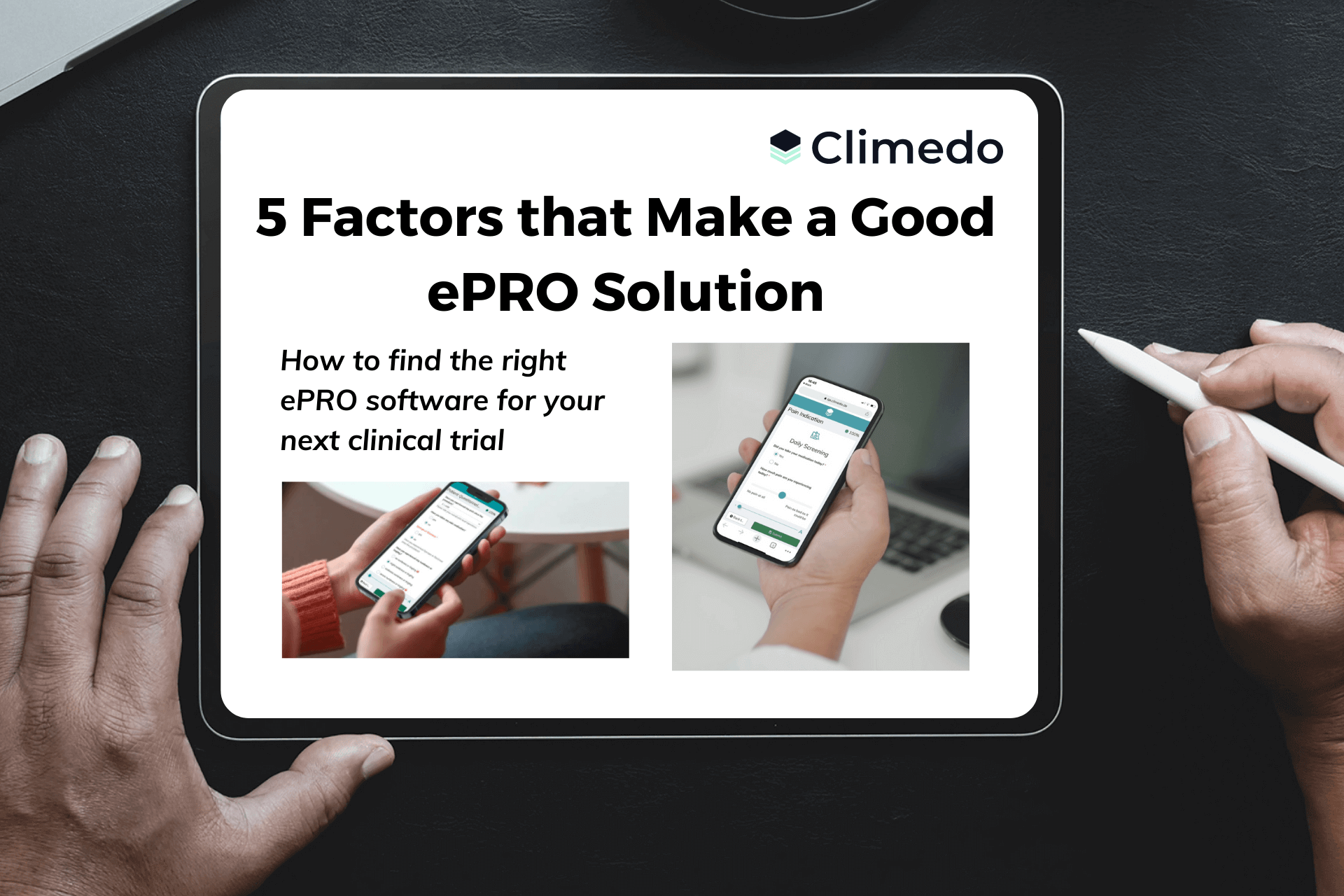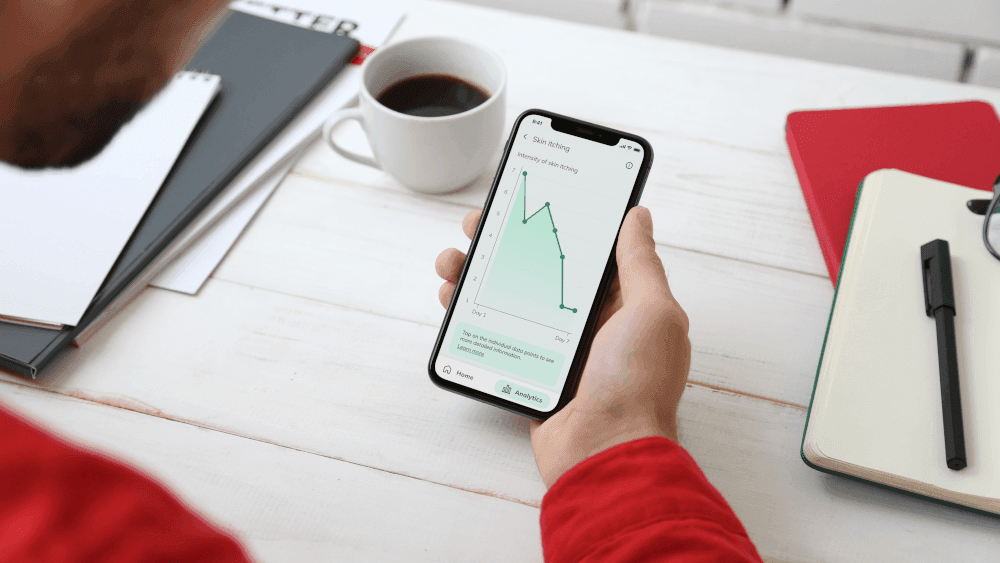3 Strategies to Make Your Data Collection More Patient-Centric

DATE
January 11, 2023
AUTHOR
Dr. David Schirmer I Head of Customer Success
In clinical trials, the use of digital devices and apps for patients is becoming increasingly widespread. Therefore, both participation and data collection need to be simplified. Studies have shown that patients are more willing to participate in a clinical trial when they can use a mobile device. One reason for this is that wearables and apps enable participation from the comfort of the patient’s home. At the same time, patients feel more involved in the study because they have easy and simple access to all relevant data.
In this context, it is crucial to record data as comprehensively as possible with a strong focus on patients. If data on participant satisfaction and behavior is collected and evaluated in parallel to the clinical trial, this has a direct impact on patient retention. So how can you effectively use your data capture to focus more on patients? In this article, we show you three ways to make digital data collection patient centric.
3 ways to achieve patient-centric data collection:
1. Capture health status in real time with ePRO
2. Save time and money with BYOD
3. Reduce the effort for patients with remote monitoring
1) Capture health status in real time with ePRO
Today, patients can access ePRO (electronic Patient-Reported Outcome) questionnaires via their mobile devices to report in real time how they assess their subjective health status, mood and coping with everyday life. Well-structured, digitalized questionnaires offer significant advantages for patients, medical staff and study sponsors. Easy access from one’s living room at home increases the long-term motivation of participants and thus also patient retention. In digitalized form, questionnaires can easily be adapted and transferred to new study designs without incurring additional expenses, such as printing costs.
However, the use of ePRO does not only improve the quality of life of participants. ePRO solutions can also make a decisive contribution to reducing hospital admissions and help to identify undesirable developments in the course of the disease at an early stage. Many stakeholders have already recognized the benefits of this data collection: According to a survey by Climedo and Trialflow, 42% of study sites and 41% of study sponsors are already using ePRO as part of their clinical trials.
2) Save time and money with BYOD
An important tool to increase the decentralized data collection and the quality of ePRO are the mobile devices of the patients themselves. In the bring your own device (BYOD) approach, participants can access the respective questionnaires or medical apps via their own smartphones, tablets or notebooks and generate important study data in the process. Familiarity with one’s own device, which is already used in everyday life, helps to reduce reservations about new technologies and programs. In fact, using one’s own smartphone or tablet is shown to significantly increase participant satisfaction and retention compared to devices provided by the study sites.This approach is also very resource friendly, as data collection can be generated more quickly compared to written correspondence or face-to-face appointments. Travel to the study site becomes unnecessary, as does a long training period due to unfamiliar user interfaces on new devices. For the study organizers, this also means lower costs because fewer end devices have to be provided. This simplifies and accelerates the collection, analysis and dissemination of results, which benefits patients and study personnel equally.
Whitepaper: 5 Factors that Make a Good ePRO Solution
What criteria does an ePRO solution need to fulfill in order to be suitable for your next clinical trial? Find out more about the 5 factors you should look for:
- High level of customization and support
- Compatibility with user devices (BYOD)
- Integration with other systems
- Notifications and automatic reminders
- Privacy and security

3) Reducing the workload for patients with remote monitoring
Many clinical trials require close patient care, for example due to the chronic nature of the disease or the duration of the healing process. This represents a major obstacle for the participants, who have to endure long travel times and high costs. Regular examinations by medical staff are required, for example to document certain metabolic values. Particularly in the case of long-term studies and chronic diseases such as diabetes, however, parts of the monitoring can be organized decentrally with the help of telemedicine. Wearables – i.e. sensors and measuring devices worn on the body – record the patient’s health data, among other things, and can be evaluated remotely by medical staff.
Remote patient monitoring (RPM) is particularly important in clinical trials involving infectious diseases or immunosuppressed target groups, where extreme caution is required to protect all participants. Remote monitoring methods, such as televisits and remote screening, are an efficient way to provide close-meshed care without exposing participants to unnecessary stress or risk of infection. A look at current practice shows that remote monitoring is worthwhile: Already almost half of the sponsors surveyed by Climedo are already using wearables and telemedicine. They report simplified study procedures and a higher willingness to participate thanks to intensive but decentralized support.
Conclusion: Patient-centric data collection promotes patient retention and improves study designs
Effective, patient-centric data collection is essential to protect the physical and psychological wellbeing of patients, ensure patient satisfaction and increase patient retention. In general, it is important to ensure that data entry is quick, straightforward and intuitive. Medical apps and wearables that can communicate well with patients’ end devices are an essential foundation in this regard.
However, telemedicine and RPM are not a one-way street and also enable participants to have better access to their own data. This improves study outcomes thanks to patients who are engaged with their disease, and their research project automatically collects more data as a result. Targeted use of these technologies not only generates relevant data for an ongoing clinical trial, but also provides valuable insights for developing more patient-centric designs for upcoming trials in the future. The implementation of decentralized clinical trials via a digital infrastructure has therefore already proven itself in practice many times.
Would you also like to motivate your patients to contribute more to the success of your clinical trials and sustainably increase your data quality with digital tools at the same time? Feel free to reach out to us or schedule a software demo.






